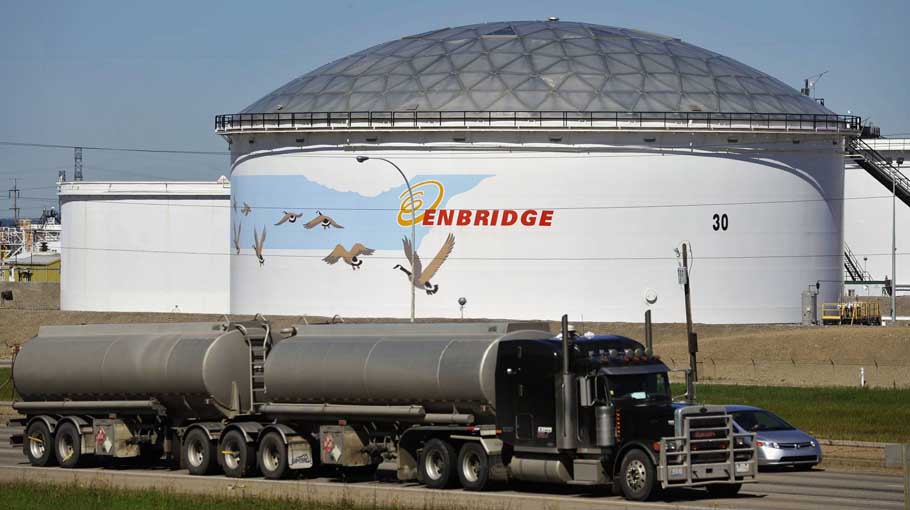Energy’s year of recovery more like a remission
For energy stocks, COVID-19 was like a sharp kick taking down a rotten door marked 'exit'

It’s been one year since the bombshell announcement of positive test results for Pfizer Inc.’s COVID-19 vaccine jolted stocks higher. Since that day, no sector has soared faster than energy.
This was something of a bungee-cord snapback. COVID-19’s lockdowns and general economic mayhem had ravaged oil demand, to the point that Nymex futures actually closed below zero for the first time ever. Until news of the vaccine broke, energy had been the worst performing sector in 2020, falling by more than half.
Since then, oil prices have rallied surprisingly hard, with Brent crude back above $80 a barrel for the first time in three years. Whereas a year ago we were drowning in the stuff, the White House may soon announce a release of oil from the Strategic Petroleum Reserve to cool things off.
And yet, it is perhaps best to think of this past year as more one of remission for the sector rather than outright recovery.
Read more: COP26: Time for politicians, billionaires to listen
For energy stocks, COVID-19 was like a sharp kick taking down a rotten door marked “exit” — and investors crowded out past the twisted hinges. The shale boom, that miracle of the 2010s, had somehow turned into energy being the worst performing sector of the decade. Skewed incentives strengthened management’s impulse to drill, destroying return on capital (see this).
To call the past year a recovery for the oil sector, implying
a return to what existed before, would be incorrect. Instead,
it's best to look at it as energy being offered the chance to
adopt a healthier lifestyle.
So despite doubling over the past year, energy stocks still aren’t what you would call popular. They constitute about 2.9% of the S&P 500, up from 1.9% a year ago, so there’s that. But the last time oil prices started with an “8,” in the fall of 2018, energy was more than 6% of the index. Indeed, if the true sign of popularity is an expanding multiple, then little has changed in a year. On cash flow multiples, the discount to the S&P 500 shrank by less than half a percentage point.
Keep in mind that Sheffield led the calls for Texas to re-institute pro-rationing of production when oil crashed in 2020, so his commitment to government getting out of the way is possibly situational. Nevertheless, he acknowledged in the same interview that the bigger issue could be investors’ scars from the last time oil rallied this high.
This isn’t to say that the fitful, fretful effort to decarbonize isn’t an issue for oil producers. After all, in the past year we’ve seen Exxon Mobil Corp. lose a proxy battle to an ESG-flavored activist fund and a certain upstart car company’s market cap surpass that of the entire energy sector.
Yet it’s best to think of this less as a separate threat and more as something that compounds an existing problem. Although COVID-19 catalyzed important changes, energy still suffers from a management discount — a lingering distrust that, even when the oil gods are smiling, executives will find a way to ensure that investors see little of the benefit in cold, hard cash. Issues of peak oil demand, restricted drilling and the like are real enough, but at this point they are secondary to that fundamental problem of how the sector deploys capital.
On the other hand, the industry does appear to have taken all this on board to some degree. The capital expenditure budget for 20 large exploration and production companies has fallen from more than $50 billion in early 2020 to less than $30 billion today, according to Kimmeridge Energy Management Co. LLC, an activist fund. That’s more consistent with maintaining output than growing it.
Strikingly, looking at a wider sample of 61 companies, Kimmeridge finds that only six prudently reinvested less than 100% of their cumulative cash flow between 2015 and 2019. Perhaps unsurprisingly, 22 have gone bankrupt and another seven are at risk of doing so, by Kimmeridge’s reckoning. Fourteen have been acquired.
The takeaway is that the sector is consolidating after the wild-West 2010s and, after learning the lessons of the past year, has emerged as a reasonable value play. However, the structural limits imposed by decarbonization — not least the pool of available capital — remain. So to call the past year a recovery, implying a return to what existed before, would be incorrect. Instead, think of it this way: Energy has been offered the chance to adopt a healthier lifestyle. Let’s see if it does.
Liam Denning is a Bloomberg Opinion columnist covering energy, mining and commodities.
Source: Bloomberg


